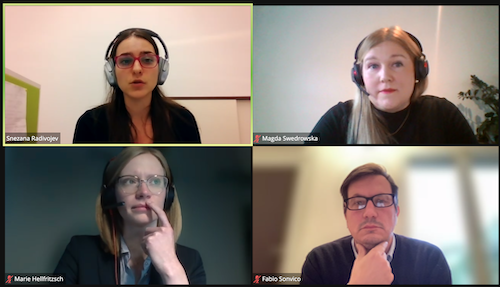When panel moderator and DDL committee member Omar Usmani pushed Capstick on what stance clinicians should take, Capstick admitted that he was still debating the question himself. Usmani then reiterated objections to the tobacco industry and asked, “Should we not just take a hard stance?” Capstick again demurred, citing the primacy of patients, and related the question to that of whether patients should be switched from higher global warming potential inhalers, where physicians have said that patients should use what is best for them. He also noted that he and other physicians had been waiting to hear what positions professional societies would take, and those organizations do not seem to be advocating for a boycott.
At the end of the session, co-moderator and DDL committee member Ben Forbes somberly pointed out that, “Some people who are caught up in this are of course the Ventura pharmaceutical scientists who didn’t join the tobacco company at the time and are often people who have been coming to DDL for many years, and obviously, we feel very sorry for those people.” While Vectura was banned from DDL 2021 as a sponsor and exhibitor, a number of individual Vectura employees did attend the conference.
Formulation
Talks about the formulation of dry powders dominated both the flash presentations and the on-demand presentations, including six out of the nine flash presentations during the live programming. Presentations addressed development of DPI formulations of a wide variety of drugs, including suramin, rifampicin, cyclosporine A, cannabidiol, ceftazidime, and levo-dropropizine/curcumin, as well as a variety of technologies.
Cuong Tran of i2c Pharmaceutical Services described a unique approach to MDI formulation in one of the flash presentations, offering a look at i2c’s Respitab technology, which is now being co-developed with Aptar Pharma in his talk on “A Propellant Dispersible Tablet for Preparation of Salmeterol/Fluticasone Combination pMDIs using Low-GWP HFC152a.” This approach, he explained, offers a way to fill MDI canisters that mitigates the flammability risk presented by HFA152a since the dispersible tablet technology allows for filling the propellant separately, after the can has already been crimped.
Developers of generic MDIs may also want to take note of the flash presentation by the FDA’s Sneha Dhapere, in which she presented data showing that the use of various realistic mouth/throat models with a cascade impactor produced significant differences in fine particle fraction for particular formulations as well as limited correlation between APSD and droplet size distribution that was highly product dependent.
In her talk on “Targeted Nasal Drug Delivery – for Nose, Body and Brain,” Julie Suman of Next Breath emphasized the role of formulation in targeting drugs delivered through the nose, saying, “I personally am convinced that the device is only part of the solution, and that we also really need to understand formulation consideration to improve transport or prolong retention, particularly with the larger molecules.” She noted increased interest in the use of mucoadhesion and penetration enhancers, but mentioned that what she finds particularly interesting is the use of nanoparticulate systems, with the caveat that many questions about intranasal nanoparticle formulation remain and that nanoparticles for delivery to the brain would need to be biodegradable to avoid toxicity issues. “It’s an evolving area,” she said, “but it has a distinct interest in CNS delivery. This is for me the area to watch.”



